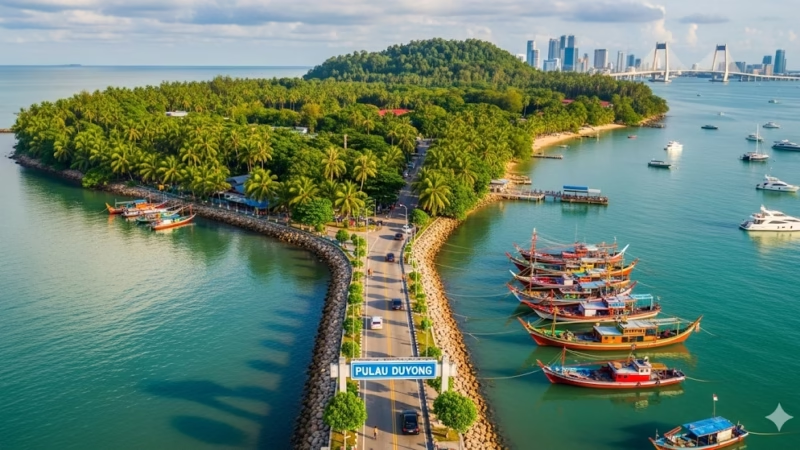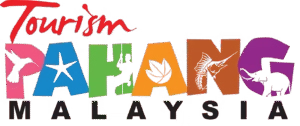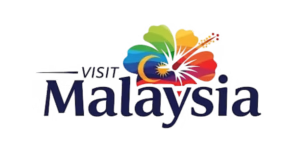Duyong Island

Duyong Island Overview
Nestled off the coast of Terengganu in Malaysia, Duyong Island is a serene destination that exudes traditional charm and natural beauty. Known for its rich maritime history, traditional Malay villages, and proximity to crystal-clear waters, this island is ideal for travelers seeking a blend of culture, nature, and tranquility. Its unique features include traditional boat-making workshops, lush mangroves, and quiet beaches far from the bustle of urban life. Duyong is worth visiting for its authentic local experience, cultural insights, and idyllic seaside atmosphere.
The Journey to Duyong Island
Reaching Duyong Island is straightforward, with several transport options:
By Air:
- Nearest airport: Sultan Mahmud Airport (TGG) in Kuala Terengganu.
- Flight duration: ~1 hour from Kuala Lumpur.
- Tip: Domestic carriers offer multiple daily flights; book in advance during peak season.
By Road:
- From Kuala Terengganu city center, take a taxi or private car to Duyong Island via the connecting bridge.
- Travel time: ~15–20 minutes.
- Tip: Rent a car for flexible island exploration.
By Boat:
- Short private boat rides available from Kuala Terengganu jetty for a scenic water route.
- Travel time: ~10 minutes.
Things to Do in Duyong Island
Duyong offers a mix of cultural, outdoor, and leisure activities:
- Traditional Boat Making: Visit local workshops to observe craftsmen building Malay boats (perahu).
- Mangrove Exploration: Kayak or boat through serene mangroves and spot wildlife like herons and monitor lizards.
- Snorkeling & Swimming: Enjoy calm coastal waters ideal for snorkeling near the shore.
- Village Walks: Experience local life in Malay villages and interact with friendly residents.
- Cultural Sites: Explore mosques and traditional wooden houses reflecting Terengganu’s heritage.
- Photography: Capture stunning sunrise and sunset views over the South China Sea.
Duyong Island Geography
Duyong is a relatively small island connected to the mainland via a bridge. Its geography features:
| Area | Key Features |
|---|---|
| Northern Shore | Quiet beaches and mangrove patches, ideal for eco-tourism. |
| Southern Coast | Traditional villages and boat-making workshops. |
| Interior | Flat terrain with palm trees and small fishing ponds. |
The island is primarily flat, making it easy to explore on foot or bicycle.
Beaches in Duyong Island
- Duyong Beach: Calm, sandy shoreline perfect for swimming and sunrise views.
- Pantai Batu Burok (nearby): Lively beach with local eateries and family-friendly spots.
- Mangrove Edges: Unique coastal areas for nature lovers and photographers.
Stay on Duyong Island
Accommodation options are limited but charming, often blending traditional architecture with modern comfort:
- Guesthouses: Affordable, family-run, and offering local cuisine experiences.
- Resorts nearby: Some upscale options are available in Kuala Terengganu with quick access to Duyong.
- Homestays: Perfect for cultural immersion and interacting with local families.
MyTrip Recommended Stays: Duyong Marina Resort
- Overview: Nestled near the beach, this resort combines tranquility and modern amenities.
- Room Types: Standard, deluxe, and family suites.
- Facilities: Pool, private beach access, boat tours, and traditional Malay décor.
- Special Perks: Sunrise breakfast by the shore, guided boat-building tours, and mangrove excursions.
Food & Dining in Duyong Island
🌴 Where to Eat
- Local Warungs: Affordable seafood and Malay cuisine.
- Cafes along the coast: Fresh coconut drinks and light snacks.
- Nearby Kuala Terengganu: Offers diverse options including Malay, Chinese, and fusion cuisines.
🍤 What to Try
- Keropok Lekor: Terengganu’s signature fish sausage snack.
- Nasi Dagang: Fragrant rice with fish curry.
- Ikan Bakar: Grilled fresh seafood with spicy sambal.
- Kuih Tradisional: Sweet local treats made from rice flour and coconut.
Tips for Tourists
- Bring sun protection (hat, sunscreen, sunglasses).
- Carry cash as some local shops do not accept cards.
- Respect local customs: dress modestly near villages and religious sites.
- Use biodegradable products to protect mangroves and beaches.
How to Get There
- Fly into Sultan Mahmud Airport, Kuala Terengganu (TGG).
- Take a taxi, Grab, or car rental to Duyong Island (~15–20 mins).
- Optional scenic boat ride from the mainland jetty (~10 mins).
- Costs: Airport taxi ~RM30–50; boat rides ~RM10–15 per person.
Boat Schedule / Tickets / Fares
- Private boats operate on-demand; no fixed public ferry schedule.
- Booking is recommended via local operators or hotel concierge.
- Typical fare: RM10–15 per person for a short crossing.
Best Time to Visit
- Ideal Months: March to October for calm seas and sunny weather.
- Peak Season: School holidays and festive periods (April, June, August, December).
- Monsoon Season: November to February; avoid for outdoor activities.
Interesting Facts about Duyong Island
- Known as the “Island of Boat Makers”, preserving centuries-old traditional craftsmanship.
- Home to vibrant mangrove ecosystems supporting diverse wildlife.
- The island’s name “Duyong” comes from the Malay word for seaweed, historically abundant in surrounding waters.
Travel Tips
- Bring insect repellent for mangrove areas.
- Rent bicycles to explore the flat terrain efficiently.
- Stay hydrated; tropical sun can be intense.
- Consider guided tours for cultural and mangrove experiences.
Final Thoughts: Why Visit Duyong Island?
Duyong Island offers a peaceful escape with authentic Malay culture, scenic beaches, and unique traditions. It’s perfect for travelers seeking tranquility, local experiences, and natural beauty without the crowds. From boat-making heritage to quiet mangroves, every corner tells a story.
FAQ – Duyong Island
Q: Is Duyong Island family-friendly?
A: Yes, calm beaches and safe village walks make it suitable for families.
Q: Are medical facilities available?
A: Basic clinics are nearby in Kuala Terengganu; larger hospitals are accessible in the city.
Q: Can I do day trips to Duyong Island?
A: Yes, it’s easily accessible from Kuala Terengganu within 30–40 minutes.
Q: What types of accommodations are available?
A: Guesthouses, homestays, and nearby resorts offer a range of options.
Q: Do I need cash or cards?
A: Cash is recommended for small shops and local eateries; ATMs are available on the mainland.






Comments are closed.